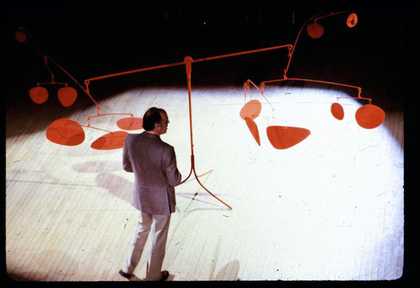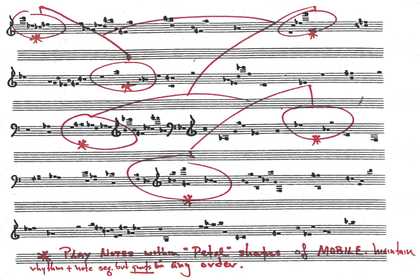…´øÿ¥´√Ω invites you to a rare performance of Calder Piece, composer Earler Brown‚Äôs sonic animation of his friendÃ˝Alexander Calder‚ÄôsÃ˝mobileÃ˝Chef d‚Äôorchestre.Ã˝Ã˝
Brown, a major force in contemporary music and the AmericanÃ˝avant-gardeÃ˝since the 1950s, was the creator of open form, a style of musical construction greatly indebted to the works ofÃ˝Calder.Ã˝
Watch the performance:
[widgets:ws-brightcove-calder-performance]
In 1963 the two embarked on a musical collaboration, for which Calder madeÃ˝Chef d‚Äôorchestre,Ã˝where four percussionists are ‚Äòconducted‚Äô by the mobile. Some 100 percussion instruments are employed in a performance where the movement of the sculpture is read by the percussionists, responding to the varying configuration of its elements. As well as functioning as conductor, the musicians actually play the mobile, making each performance both visually and musically unique. It was not until 1966 that the work was finished andÃ˝Calder PieceÃ˝was first performed at the Th√©√¢tre de l‚ÄôAtelier in Paris, early inÃ˝1967.Ã˝
Calder PieceÃ˝is one of kind and Earle Brown insisted that the music must never be independent ofÃ˝Chef d‚Äôorchestre. This major revival of a work not played for over 30 years is itsÃ˝UKÃ˝premiere, performed by the percussion ensemble of the Guildhall School of Music and Drama in collaboration with Gramophone Award-winning conductor RichardÃ˝Bernas.Ã˝Ã˝
November 1952, an abstract work by Brown entirely composed in graphic score, and fragments of his friend John Cage‚Äôs huge pieceÃ˝Atlas Eclipticalis,Ã˝based on the star charts of the Southern Hemisphere, complete theÃ˝programme.
The piece is one of a kind…It is my very deeply felt homage to ‘one of a kind’ Sandy Calder and to his life and work
Calder Piece program note, January 1980, Earle BrownÃ˝


